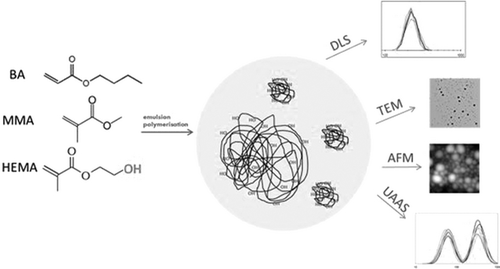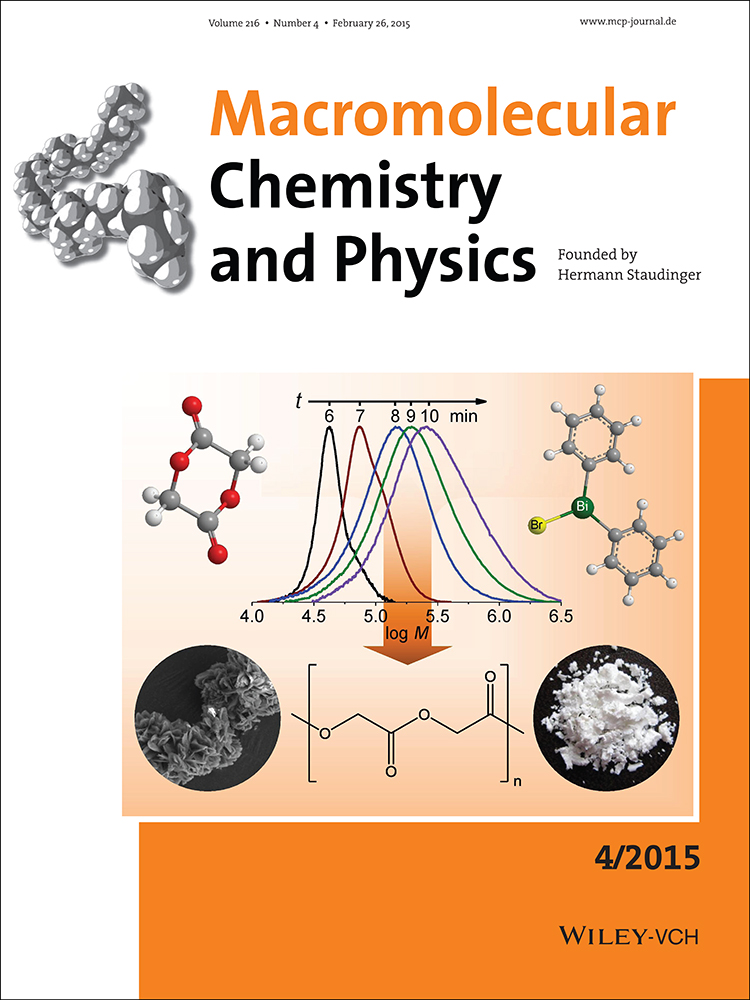Comparison of Particle Size Techniques to Investigate Secondary Nucleation in HEMA-Rich Latexes
Abstract
2-Hydroxyethyl methacrylate (HEMA)-rich latex is synthesized via a semibatch monomer-starved emulsion polymerization process. Six emulsion polymerizations, containing 0–40 mol% HEMA in monomer composition, are synthesized and compared. Calculations of mass balances are made in order to predict final particle size and particle size development during the course of polymerization. Average particle sizes obtained by dynamic light scattering (DLS) are compared to ultrasound acoustic attenuation spectroscopy (UAAS) and transmission electron microscopy (TEM). The influence of HEMA on polymerization on the onset of secondary nucleation is evaluated using each technique. The DLS, TEM, and UAAS secondary nucleation data are compared to physical latex blends of small and large particles. The blend data are consistent with the secondary nucleation data. Additionally, conductivity and surface tension are monitored. TEM, atomic force microscope (AFM), and UAAS are found to be more appropriate methods than the widely used DLS for particle size and particle size distribution characterization in this system. Increasing HEMA content to 20 mol% results in formation of significant amount of secondary particles via proposed homogeneous nucleation of HEMA-rich oligomers.





